
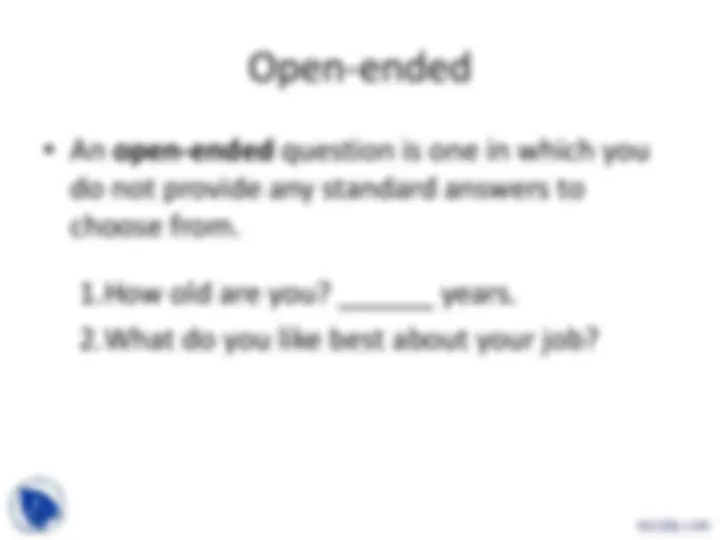
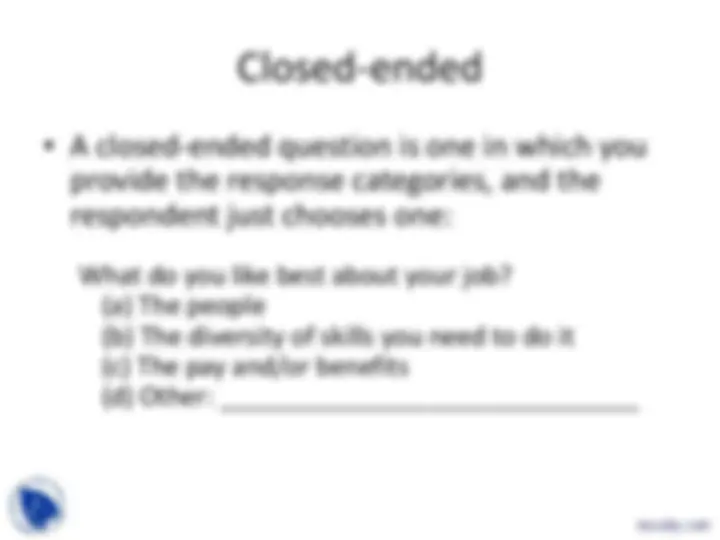
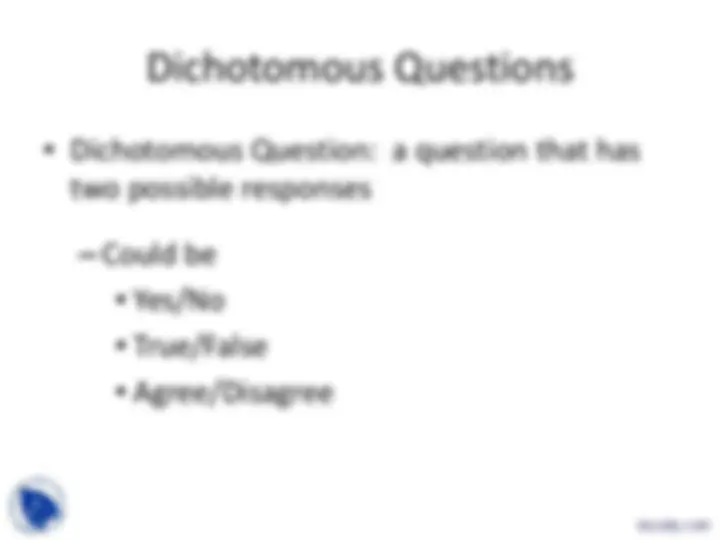
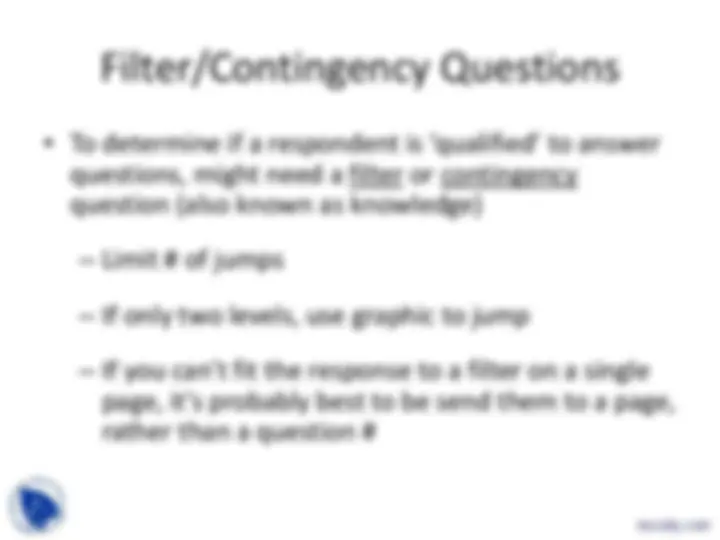
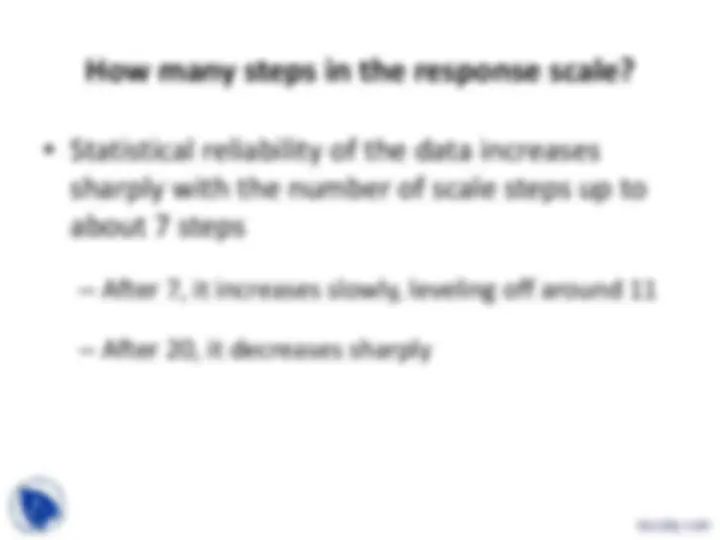
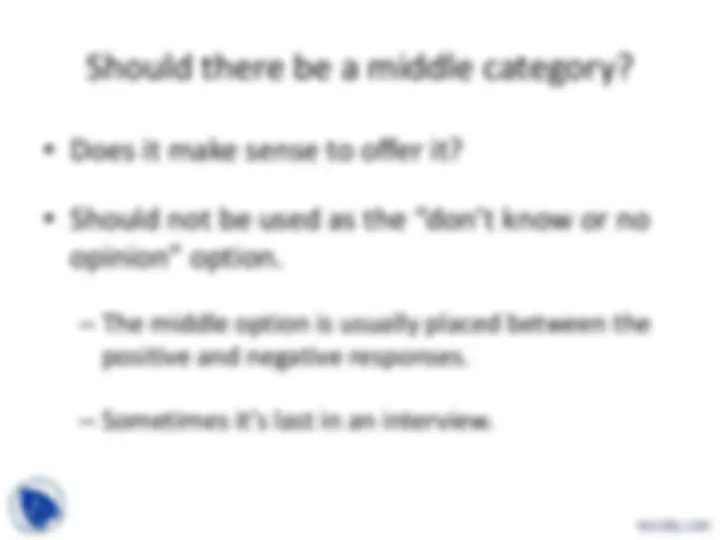
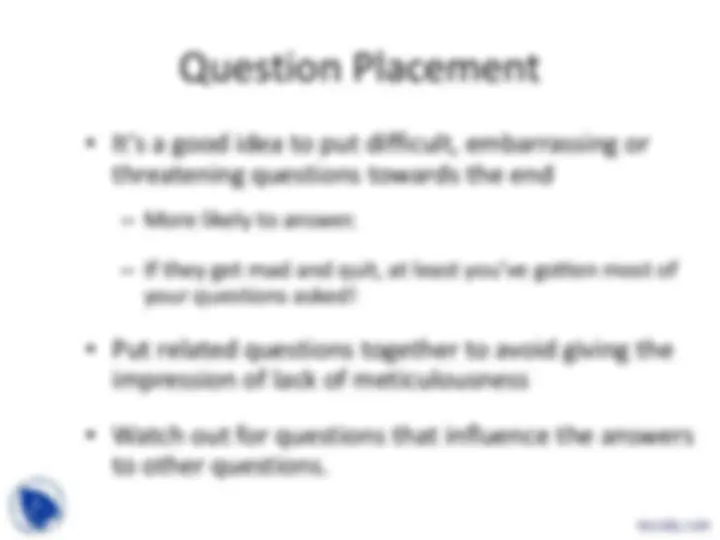
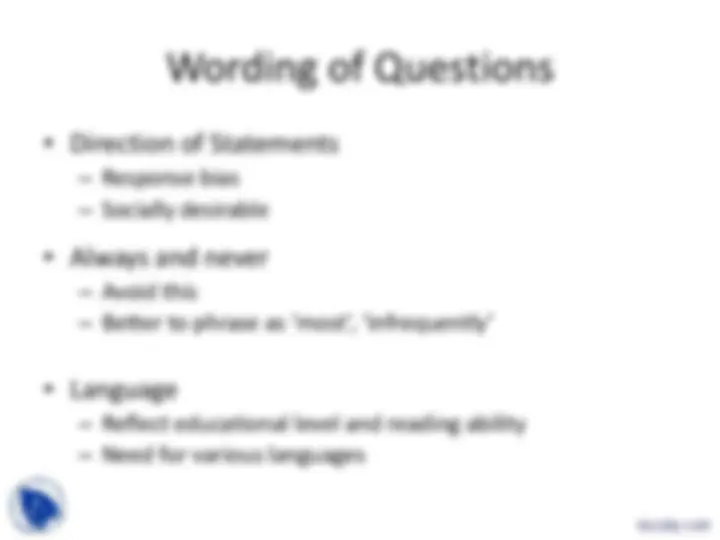
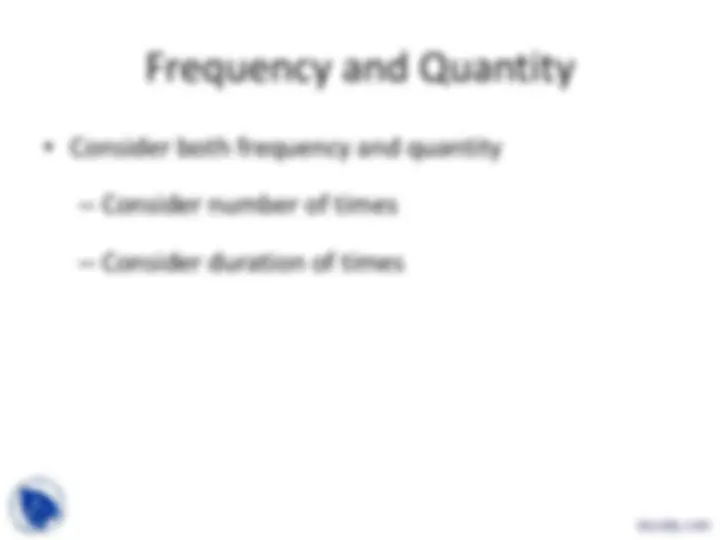
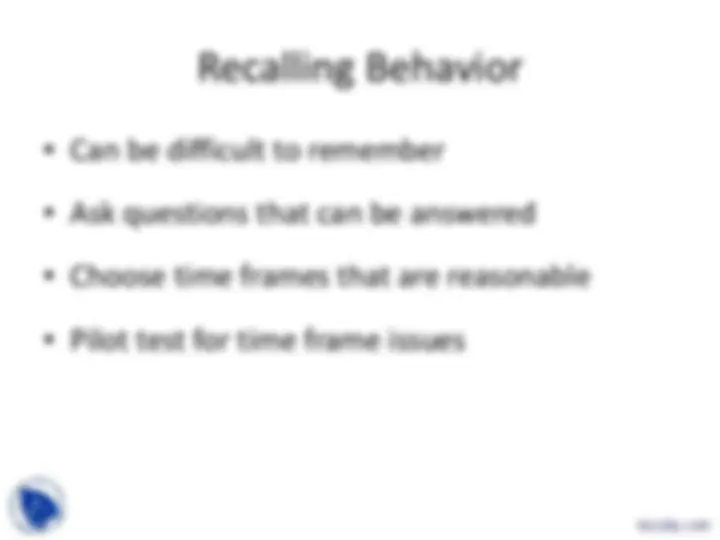
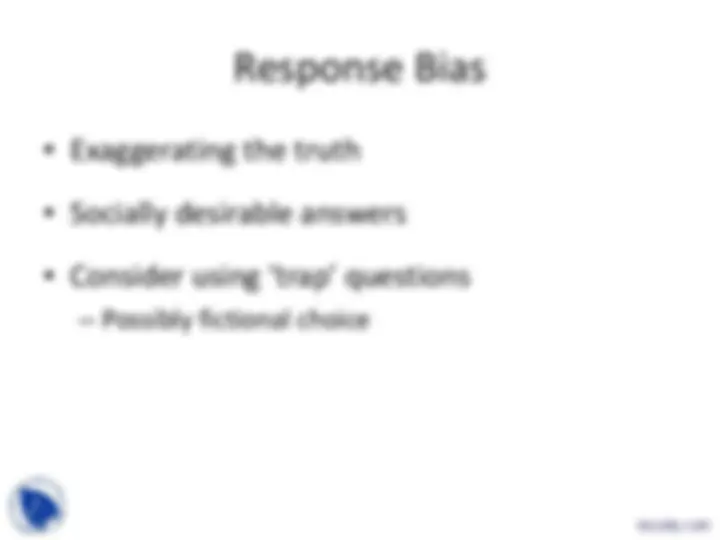
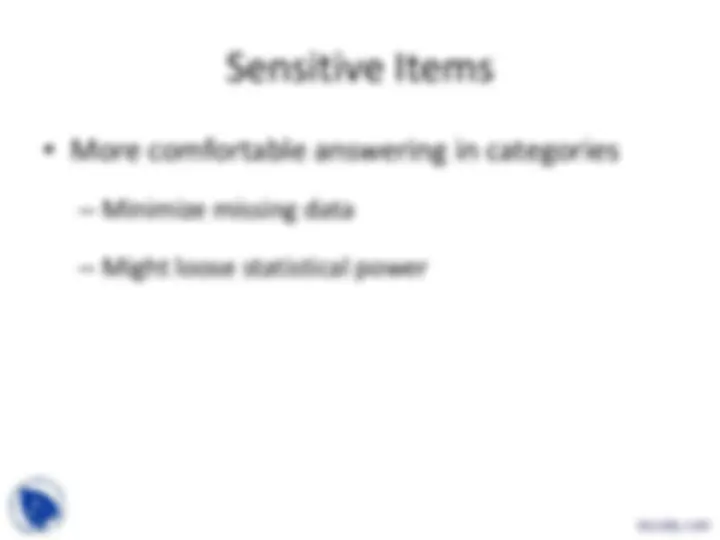

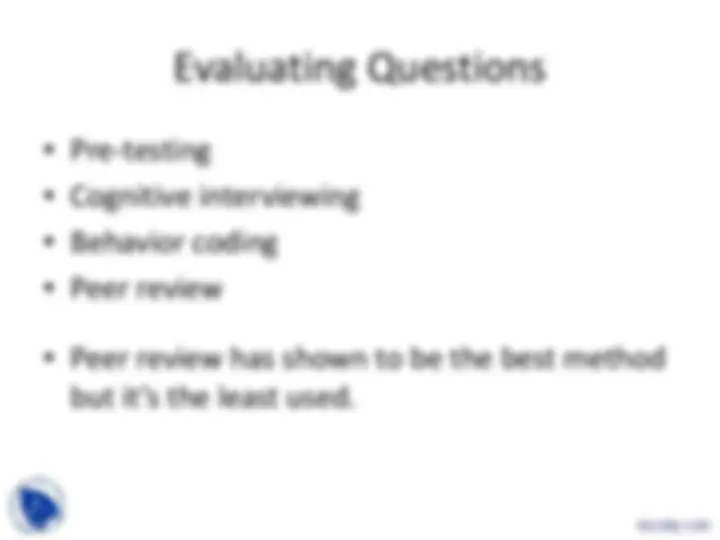
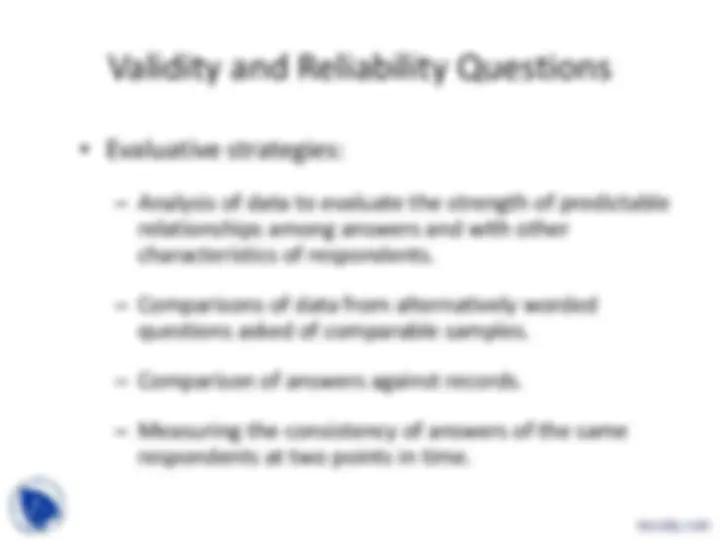
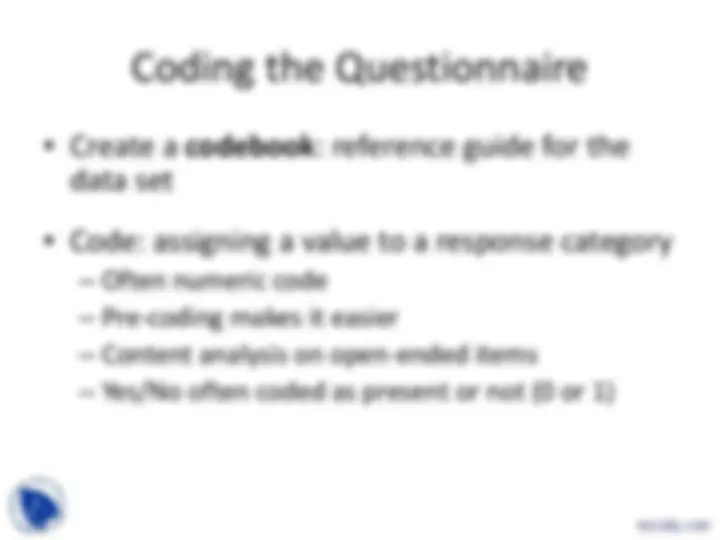
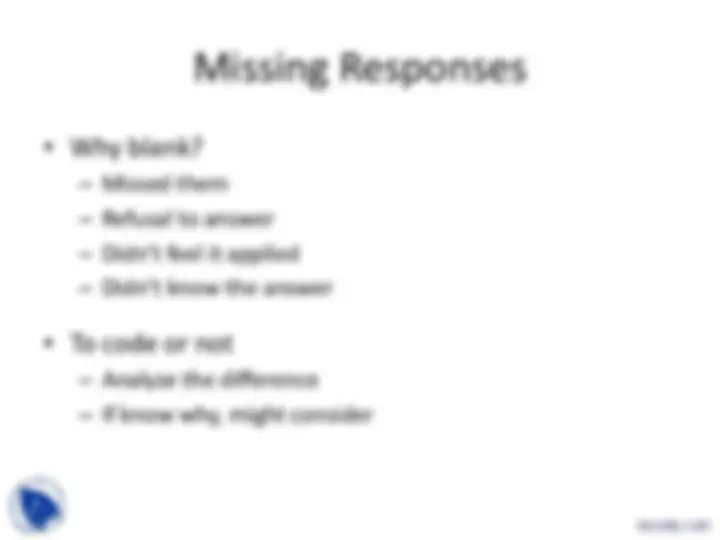
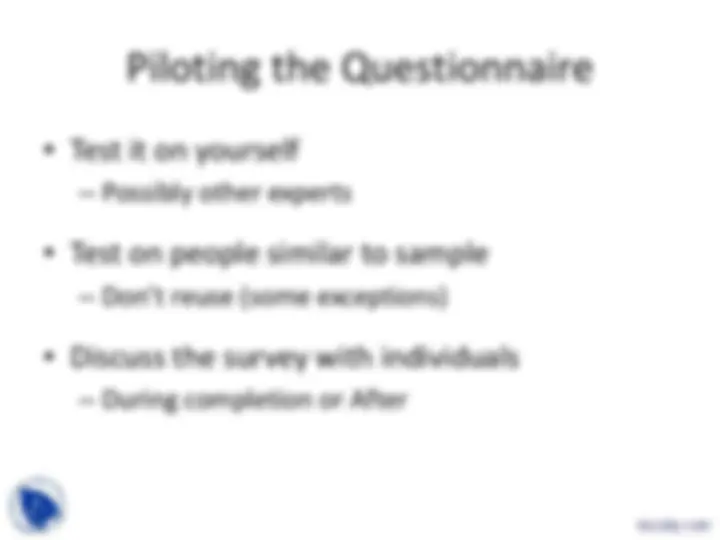
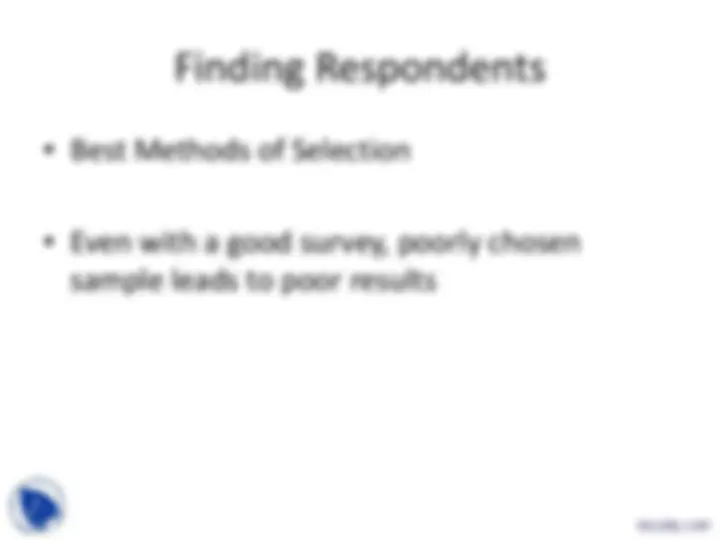


Study with the several resources on Docsity

Earn points by helping other students or get them with a premium plan


Prepare for your exams
Study with the several resources on Docsity

Earn points to download
Earn points by helping other students or get them with a premium plan
Community
Ask the community for help and clear up your study doubts
Discover the best universities in your country according to Docsity users
Free resources
Download our free guides on studying techniques, anxiety management strategies, and thesis advice from Docsity tutors
An in-depth exploration of various question types, including open-ended and closed-ended questions, dichotomous questions, and questions based on level of measurement. It also covers important considerations such as question placement, wording, and response bias. Use this guide to create well-designed questionnaires for research or surveys.
Typology: Slides
1 / 27

This page cannot be seen from the preview
Don't miss anything!




















What do you like best about your job? (a) The people (b) The diversity of skills you need to do it (c) The pay and/or benefits (d) Other: ______________________________
Should there be a middle category?
Mutually Exclusive and Exhaustive